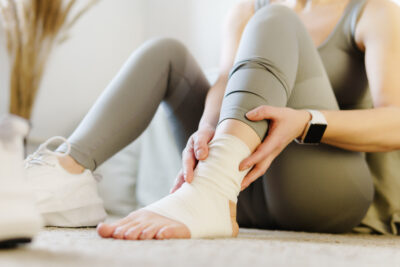Knowledge Center
Strategies to Help Heal Your Broken Bones
August 30, 2019

In the US, approximately 5 to 10% of bone fractures exhibit a non-union or delayed healing. What can you do to help repair your broken bone?
There are risk factors that contribute to compromised bone healing:
- Aging population
- Existing medical conditions, such as osteoporosis
- Alcohol or tobacco use
- Deficient nutrition
- Severity of injury
Some of the risk factors are within your control and some are not.
The five basic stages of bone healing after a fracture include:
- Immediately a hematoma forms. Blood coagulates in between and around the broken ends of the bone.
- Within 24 hours, inflammation peaks at the fracture site. Inflammation actually helps with tissue regeneration and promotes the production of primary callus.
- In the first two weeks, soft cartilaginous callus forms, which begins to give the bone a stable structure. Capillaries and supporting blood vessels connect into the callus.
- Soft cartilaginous callus is reabsorbed and replaced by hard bony callus called woven bone, which is more solid and mechanically rigid.
- As early as 3 to 4 weeks, woven bone is reabsorbed and remodeled into lamellar bone, normal hard, strong bone. This bone regeneration process may take months or years to complete.
What can be done to speed up the bone healing process?
- Regenerative medicine therapies have shown potential in fracture healing and bone regeneration. Stem cells with growth factors derived from your own bone marrow are administered via injection.
- Bone grafting can help to provide a framework for new bone to grow when there is bone loss from a fracture. The transplanted bone can come from you or a donor.
- Half of the volume of your bone is protein. Dietary protein builds and repairs bones, and supplies essential amino acids. How much protein is enough? Recent research suggests an intake of 1 to 1.5 grams of protein per kg of bodyweight. If you weigh 140 pounds, divide by 2.2 to convert to kg = 64 kg. Multiply by 1.5 (the high end). So a recommended 95 grams of protein for healing are needed daily. Five boiled eggs, 3.5 ounces of chicken breast, 5 ounces of salmon, 4 ounces of beef, provide 30 grams of protein.
- Vitamin C builds collagen, the predominant protein in bones. Take supplements and eat C-rich foods such as oranges, lemons, broccoli, and papaya.
- The calories you consume need to be nutrient-dense foods, instead of empty calories in processed and refined foods.
- It hurts when you break a bone. Nonsteroidal anti-inflammatory drugs may increase the time for your broken bones to heal. There is evidence that NSAIDs interfere with the bone re-absorbance and renewal stages. If you need pain medication, take acetaminophen (Tylenol).
- Bone healing requires adequate blood flow to the fracture site, which is enhanced through exercise. Discuss stretching and strengthening exercises with your DOC physical therapist to avoid stress on the fractured bone, while accelerating healing.
Broken bones? Go to the DOC orthopedic surgeon for evaluation, diagnosis and treatment. Discuss regenerative medicine therapies. Follow a heal-healthy diet. Talk to the DOC pain management specialist about pain relief after your injury. Work with the DOC physical therapist to maintain strength and range of motion and safely protect the fractured area.
For more information on the cost of care, click here
Continue Reading
We Have Specialists Available 7 Days a Week




